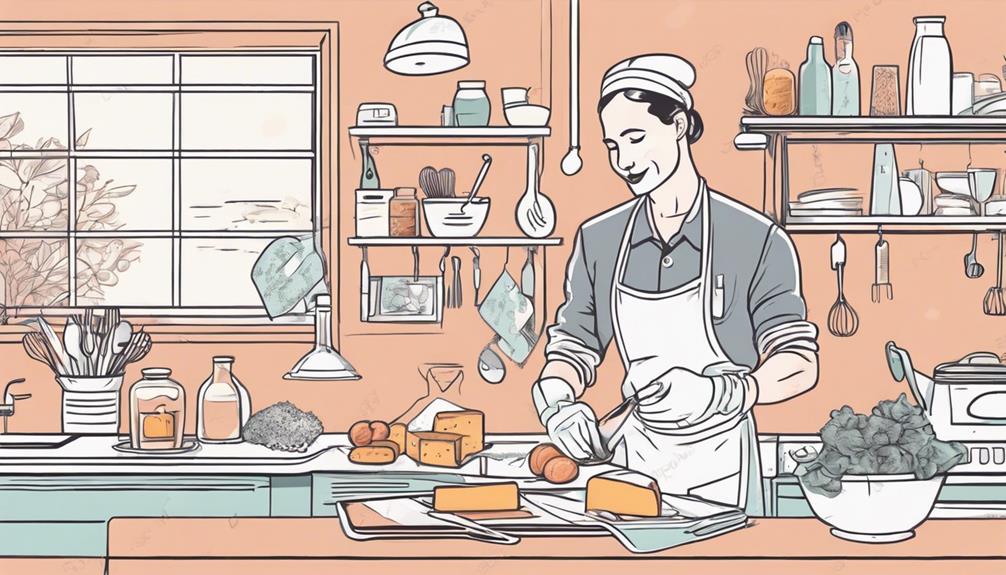How To Become More Self-Sufficient Without Starting a Full-Blown Farm…
Want to start preserving your harvest, making your own soap, or building a backyard root cellar — but not sure where to begin? “Homesteading Advice” gives you instant lifetime access to 35+ practical homesteading books on food preservation, veggie gardening, DIY natural cleaning products (save over $250 per year with this skill alone), brewing, off-grid energy, and a whole lot more…
Click Here To Check It Out Now!
“I’m fairly new to cheese making and love working with my hands, but recently, I’ve started getting a little paranoid about maintaining the right hygiene. I’m about to start a new batch of aged cheese in my small home-based setup, but I’m worried about contamination. What are the best practices for ensuring personal hygiene while making cheese to avoid any mishaps?” thanks, Patrick, Melbourne, Australia.
How Do You Ensure Personal Hygiene During Cheese Making?
Hey Patrick! Cheese making is a wonderful craft, and maintaining top-notch hygiene is key to creating great cheese. Contamination can ruin your efforts and cause health issues, so it’s fantastic that you’re focused on getting it right. Let’s walk through some essential practices to ensure you’re keeping things hygienic.
Understanding Why Hygiene Matters
First off, let’s talk about why hygiene is so important in cheese making. Cheese is a living food created by cultures and enzymes that ferment milk sugars. While these organisms are good, unwanted bacteria or molds can spoil your cheese and pose health risks. Maintaining personal hygiene minimizes these risks.
Hand Hygiene
Your hands are your primary tools. Keeping them clean is your first line of defense against contamination.
- Washing Your Hands: Always wash your hands thoroughly with soap and warm water before starting. Scrub for at least 20 seconds, making sure to clean under fingernails and between fingers.
- Sanitize: Use a food-safe hand sanitizer after washing your hands or if you need to touch something outside of your sterile working environment.
- Wear Gloves: Consider wearing disposable gloves for added protection. Change them regularly, especially if they become contaminated.
Personal Cleanliness
Beyond hands, maintaining your overall cleanliness is crucial.
- Hair Control: Tie back long hair and use a hair net or hat to prevent stray hairs from falling into your cheese.
- Clothing: Wear clean, washable clothing. A dedicated cheese-making apron is a good idea to keep your everyday clothes from contaminating your work area.
- Jewelry: Remove rings, bracelets, and watches. These accessories can harbor bacteria and are tough to clean thoroughly.
Work Area Cleanliness
Keeping your working environment clean is just as important as personal hygiene.
- Sanitize Surfaces: Use a food-safe sanitizer to clean all surfaces before and after cheese making. Pay extra attention to cutting boards, counters, and sinks.
- Tools and Equipment: Always sterilize all your tools and equipment. Boil metal utensils or use a sanitizer spray. Silicone and other materials can be disinfected as per their manufacturer’s guidelines.
- Trash Management: Empty trash bins regularly to avoid bad odors and pest attraction. Use liners and disinfect the bins frequently.
Mental Hygiene and Habits
Your approach and mental habits play a big role in maintaining hygiene.
- Avoid Touching Your Face: It can be tempting, but try to keep your hands away from your face during the cheese-making process.
- Mindfulness: Be mindful of your movements. Think before touching anything that’s not part of your cheese-making environment.
- Stay Organized: An organized workspace means less chance of accidental contamination and allows you to focus more on the cheese and less on where you put that spatula.
Handling Milk and Cultures
Handling milk and cultures deserve special attention due to their susceptibility to contamination.
- Fresh and Clean Milk: Ensure milk is fresh and has been stored at appropriate temperatures. Avoid raw milk unless you’re certain of its quality and safety.
- Sanitize Containers: Use clean containers to hold and measure milk and cultures. Pre-sanitized jars and bottles are your best friends here.
- Temperature Control: Maintain the proper temperature for your milk and cultures. Use a thermometer to help keep everything just right and avoid any bacterial growth that thrives in warmer conditions.
Common Pitfalls to Avoid
Even seasoned cheese makers like Patrick can fall into common hygiene traps. Here’s what to watch out for:
- Cross-Contamination: Avoid using the same utensils or tools for different tasks without proper cleaning in between.
- Breaks and Pauses: If you need to step away from your cheese-making station, sanitize your hands and tools again when you return.
- Overlooking Equipment: Pay extra attention to the nooks and crannies in your equipment. A small bit of leftover residue can spoil your efforts.
Special Considerations for Home-Based Setups
Since you’re working from home, Patrick, here are a few tailored tips:
- Dedicated Space: If possible, have a dedicated area for cheese making. Keeping it separate from your general kitchen area helps minimize risks.
- Pet Management: Keep pets out of the cheese-making area to avoid any accidental contamination. Pet hair can be a sneaky culprit!
- Children and Family Members: Educate your household about your cheese making hygiene practices. This will help them understand the importance and avoid accidental contamination.
Final Thoughts…
Patrick, thanks for your question. Cheese making is a rewarding craft, and ensuring good hygiene is a fundamental step to success. Remember to keep your hands, tools, and environment clean, and always be mindful of potential contamination.
With these practices in place, you’re well on your way to crafting some fantastic cheeses! Happy cheese making!

